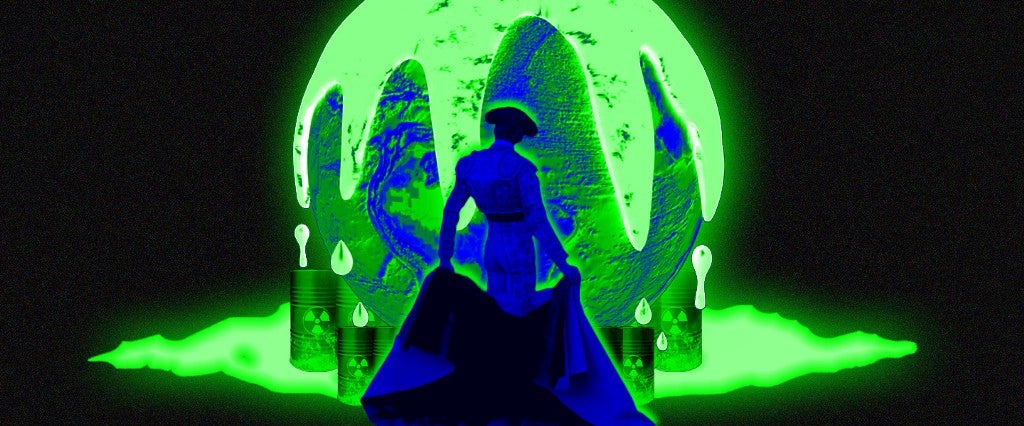On the academic database JSTOR, the earliest references to “toxic masculinity” as a concept come from Linda Lindsay’s 2005 Yale Journal of Biology and Medicine article, “Gender Roles: A Sociological Perspective.” Lindsay didn’t use the term exactly, but did refer to traits commonly associated with it: “Young men are often told what they should not do, rather than what they should do. ‘Don’t be a Sissy’ or the classic ‘Big boys don’t cry.’ For males, masculine gender roles are presented as more inflexible, than the roles given to women.”
Later, it was more precisely defined as “traditional cultural, masculine norms in American and European societies that can be harmful to women, men and society overall.”
That’s not to say that the idea of toxic masculinity is exclusively applicable to the West. According to Technode, the equivalent of “toxic masculinity” in Mandarin is 直男癌, which loosely translates to “straight male cancer.” And the term doesn’t just refer to a wider cultural issue; it’s more specific to a certain kind of man, one who is “not only sexist, but stubbornly sexist. [They] get defensive easily. [They] don’t like being challenged on [their] views and, like cancer, something drastic needs to happen — kind of like chemotherapy — for [their] views to change.”
When I ask Twitter for other examples, one familiar term continually pops up: Machismo. Used in both Latin American Spanish and Portuguese, the term’s literal translation is “exaggerated masculinity.” Per the American linguist William Safire, machismo has had several meanings since its general use started in the 15th century. The term originally evolved from cavalheirismo, which referred to landowning men of high stature during the Iberian Union. When that empire collapsed in the 17th century, the term came to describe men who would “fight and defend” their families.
It was only in the 20th century when machismo began to be associated with the negative elements of “hypermasculinity.” Carlos Adams’ 2006 dissertation, “Machismo and Geographies of Hope,” describes this shift in definition to have largely been driven by a deliberate attempt to warp Hispanic and Latino identity:
The focus on the negative aspects and avoidance of positive aspects of machismo coincides with the concept of marginalization and powerlessness of Hispanic and Latino. … The focus on the negative and avoidance of the positive creates a power dynamic that legitimizes mainstream American hegemonic masculinity as the correct masculinity and subjugates machismo as a degenerated ‘non-white’ form of abuse against women and backwardness. As a result, it creates a sense of powerlessness within Latino males in their expression of their masculinity.
In India, toxic masculinity as a term (टॉक्सिक मस्क्यूलिनिटी) has become more commonly used in the media following a number of high-profile acts of harassment and abuse toward women. The Indian magazine Lifealth describes it as ranging from “lack of emotion” and “intense desires to win” to “taking excessive risks” and being “self-destructive to prove one’s strength.”
Throughout South Asia, though, there are much older terms that refer to the wider culture that facilitates toxic masculinity, according to Pakistani writer and New York Times columnist Bina Shah. Over Twitter, she tells me that izzat, a term that loosely refers to “honor” in Urdu, Hindi, Punjabi and other regional languages, also encompasses similar meanings as toxic masculinity. “There’s no concept of masculinity at all being toxic in our part of the world,” she responds when I ask her why izzat could be applied to both the harmfulness of aggressive masculinity and an accepted system for keeping ethnic and religious familial bonds in tact. “Everything [in India and Pakistan] to do with masculinity is seen as positive. So it’s a new concept [to be viewed as something negative].” In terms of Pakistan specifically, toxic masculinity hasn’t received much widespread usage beyond English-language newspapers and television channels.
That said: “Terms that disparage men have been around for a long time [in Pakistan],” explains Afzal Khan, an Urdu language student at the School of Oriental and African Studies and a private tutor in Urdu. “There are terms like haraamzada (حرامزادہ), which likely developed from Persian from the time that modern Pakistan was ruled by the Qajar dynasty, that are still used today. Haraamzada can mean different things. For example, its most literal definition is “bastard,” a man born out of wedlock. Because sons are so important in families, it would mean that these men tarnish the whole family. These days, the term refers to any form of disparagement, so if a son humiliates his family he could be referred to as haraamzada. In this case, it means he’s despicable or horrible.”
There are, of course, many more examples of how toxic masculinity could be translated into other languages. But what’s most striking is that even though the term might be understood, referenced or adopted in ways that don’t quite match its original Western coinage, its characteristics have existed for decades, sometimes even millennia.
Or more simply put, the only thing new about it is its name.

